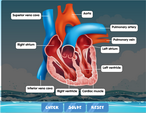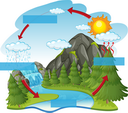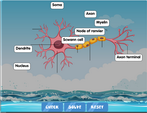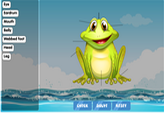Human lungs diagram labelling quiz
The lungs work hard to provide oxygen to our body. As we inhale, it expands much like a balloon with fresh, oxygen-rich air. When we exhale, it shrivels up, releasing air full of carbon dioxide, a waste product of our body’s natural functions.
Dive Deep into Respiratory Learning with Labelling of the Lungs
Breathing is a natural phenomenon, something we do every second without giving it much thought. But have you ever paused to ponder the wonders of the human respiratory system? Central to this system are our lungs, a pair of spongy organs that enable us to inhale the oxygen our bodies need and exhale the carbon dioxide they produce. Understanding the anatomy of the lungs is crucial to appreciate the wonders of human physiology. Enter the world of labelling of the lungs – an interactive, educational journey that combines the thrill of a game with the richness of science education.
Unfolding the Complex Structure of Lungs
The lungs are not just balloons that fill up with air. They have a detailed structure comprising multiple parts, each with its specific function. The bronchi, bronchioles, and alveoli play essential roles in the process of respiration. A comprehensive diagram detailing these parts provides an effective visual aid, fostering a better understanding of how air travels within our bodies and the mechanisms of gas exchange.
The Joy of Labeling the Lungs
Children are naturally curious, and what better way to channel this curiosity than through interactive learning? The Human Lungs Diagram Labelling Quiz offers children:
Interactive Exploration: Hovering over different parts of the diagram prompts explanations and details about that specific segment. This feature aids in reinforcing memory and understanding.
Self-Paced Learning: Kids can take their time to absorb information, ensuring that learning is at their own comfortable pace.
Feedback Mechanism: After attempting the labeling activity, instant feedback boosts learners' confidence and provides areas of improvement.
Why Choose Interactive Labelling Activities?
Engagement: Interactive diagrams, especially in the realm of lungs labelling, hold children's attention far longer than static images or plain text. This engagement ensures deeper knowledge retention.
Holistic Understanding: These platforms promote a comprehensive understanding, connecting theory with practical application.
Versatility: Such activities can be easily integrated into classroom lessons or used for home-based learning.
For those eager to explore the vast universe of science further, ESL Games Plus offers a plethora of science games, making the learning journey expansive and enjoyable.
Breathing Life into Learning
The respiratory system, especially our lungs, is a marvel of human engineering. Through activities focused on labeling the lungs, children can embark on an insightful journey, discovering the nuances of these essential organs. Such interactive platforms, combining science and technology, make learning not just educational but truly exhilarating. So, young scientists, are you ready to breathe life into your learning adventures? Join in and let's explore the wonders of the human body together!
The lungs are the primary organ of the respiratory system, the system responsible for us breathing properly. Remember that we breathe in through our nose. This air goes through several passageways – down the throat, voice box and windpipe – leading to the trachea.
The trachea branches into the primary bronchi on the left and right sides; one connected to each lung. They split further into many secondary and tertiary bronchi, becoming smaller and smaller, and eventually end into alveoli.
Alveoli are the basic unit of the lungs. These units are little air sacs where air ends up. Gas is exchanged here, as blood is refilled of oxygen and removed of its CO2 wastes. The air is then exhaled.
To protect against friction and damage, the lungs are surrounded by two slippery layers of tissue called pleura, which are filled with sticky pleural fluid. The pleura also help us breathe safely and normally.
This human lungs diagram labelling quiz can be a helpful study aid in reviewing the structure and composition of the lungs, and how air is inhaled, used to exchange gases, and exhaled.











